Pack your ruby slippers and strap on your seatbelts — it’s time to queer the all-American road trip. According to survey data from Airbnb, domestic car travel continues drawing the most interest from American travelers this year — a wise choice for folx hoping to avoid the unpredictability of international travel during the pandemic. That means Mykonos is out, America is in, and it’s high tide you got your car lubed up and ready to ride.
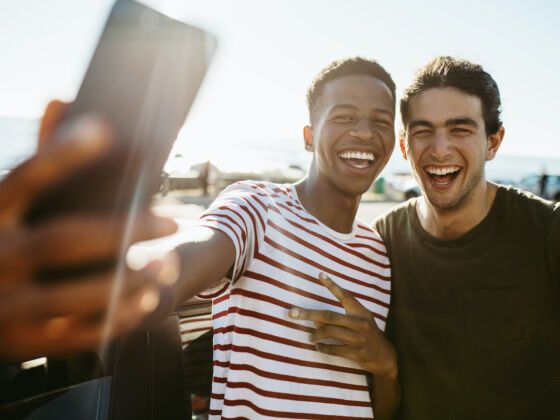

The Ultimate Cross-Country Road Trip for LGBTQ Travelers
Road trips play an integral role in queer American culture. In the early 1960s, Bob Damron began creating pocket-sized address books to help gay men find queer spaces while traveling around the nation. These guides steered people to queer communities around the country, from San Francisco to Birmingham, giving LGBTQ folx an opportunity to discover what so many privileged Americans already found on the open road: freedom.
But freedom wasn’t always a given for queer people, leading LGBTQ travelers to favor well-known gayborhoods in liberal cities near the US coastlines. According to a study by misterB&B, modern LGBTQ travelers still prefer vacations in destinations like New York and California, reinforcing a coastal binary that improperly excludes a majority of the nation as “flyover country.”
This summer, consider challenging the binary by leaving your coastal comfort zone. From famous LGBTQ metropoles to little-known liberal enclaves, this road trip integrates the coasts with everything in between, giving new meaning to the phrase “fruited plain.”
Note: This itinerary is a two-week excursion that can be divided into smaller sections depending on your desired distance and travel time. You can do the road trip in either direction.
Stop one: San Francisco, California
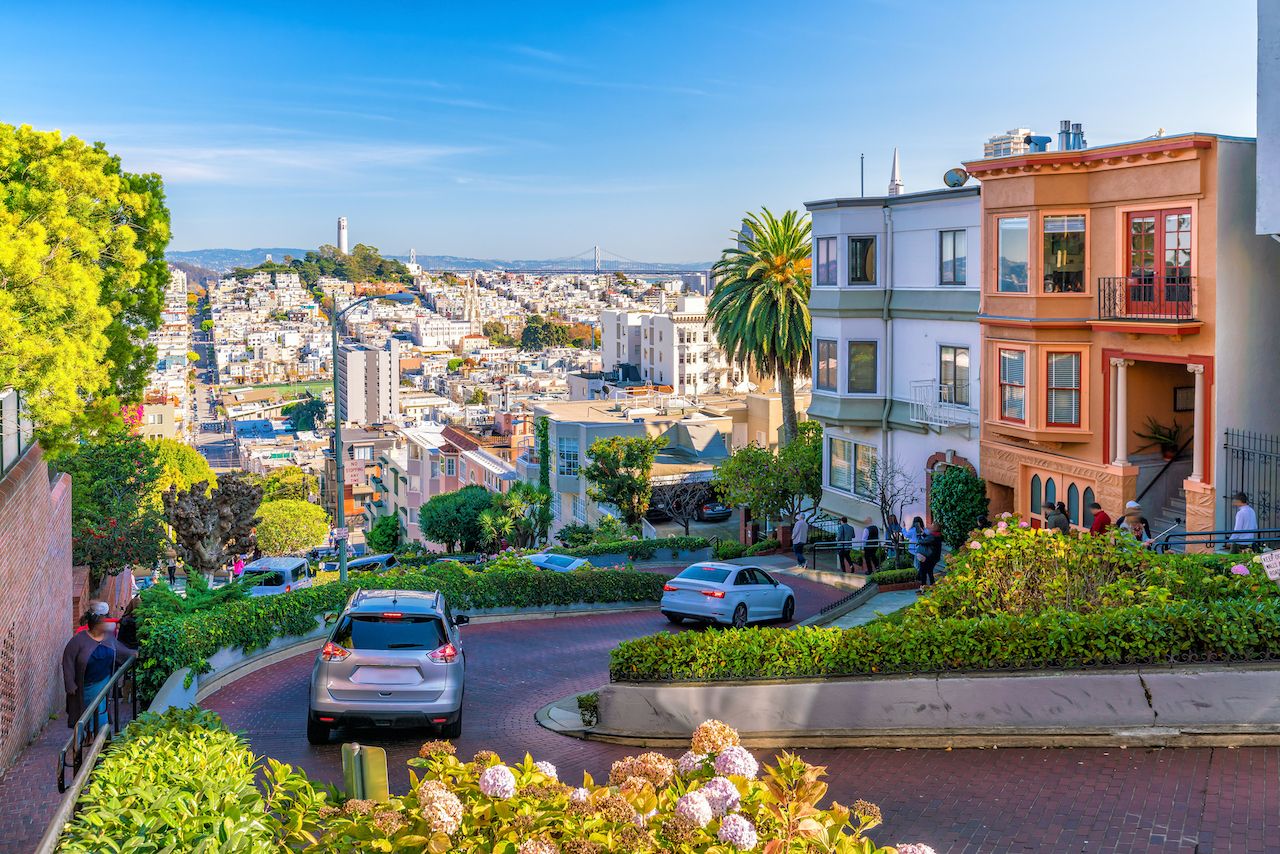
Photo: f11photo/Shutterstock
San Francisco is the capital of LGBTQ life in the US and the ideal place to begin this journey. Not only did SF give birth to the rainbow flag, Harvey Milk’s political career, and Armistead Maupin’s Tales of the City, but it also has more LGBTQ residents per capita than any other major US metropolis.
Queer history buffs will appreciate sites like the National AIDS Memorial Grove and the GLBT Historical Society Museum. Party mavens can pick between leather dives like Powerhouse, dance bars like Beaux, and a healthy list of other queer establishments that rival most towns in the US. Marshall’s Beach, a clothing-optional queer hang beneath the Golden Gate Bridge, is the perfect place to dip your derriere in the Pacific; Dolores Park’s southwest corner is a land-locked “gay beach” that attracts crowds on sunny days.
The grand-zaddy of queer culture, Oscar Wilde, wrote in The Picture of Dorian Gray, “It’s an odd thing, but anyone who disappears is said to be seen in San Francisco.” It’s no wonder, then, that so many queer travel narratives wind up in the Golden Gate City, including Paul Takes the Form of a Mortal Girl, Less, and Kerouac’s beloved On the Road. San Francisco is magnetic for queer folx, and if you don’t start here now, you’ll wind up here later.
Starting in SF also means driving one of America’s most iconic roadways — the Pacific Coast Highway. This coastal drive, regularly referred to as Highway 1, winds its way from Northern California’s foggy cliffs to SoCal’s white-sand beaches while passing charming seaside towns like Monterey, San Luis Obispo, and Ventura. The 8.5-hour excursion can be done in a day, but stopping in one of these towns for a night makes a worthwhile detour.
Travel from San Francisco to Los Angeles: 8.5 hours, 442 miles
Stop two: Los Angeles, California
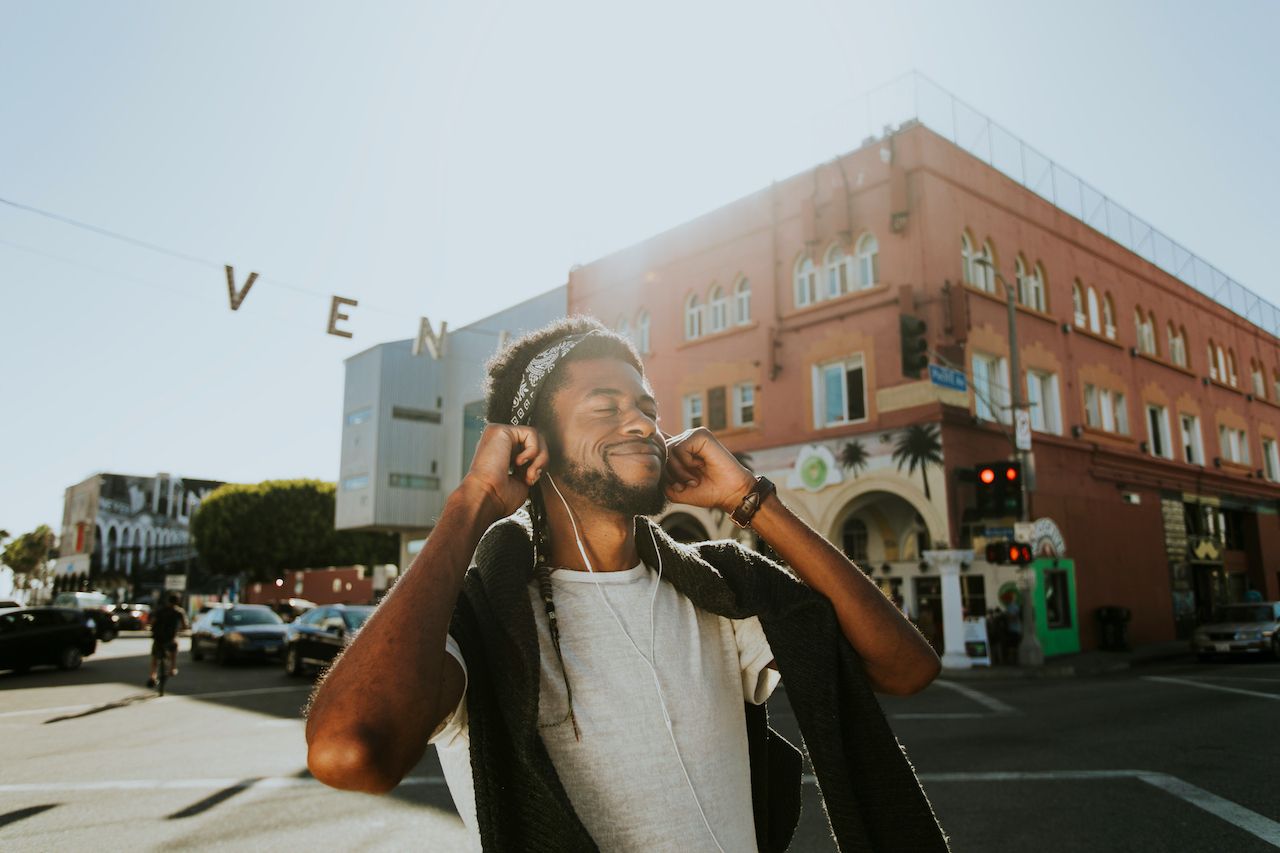
Photo: Rawpixel.com/Shutterstock
Perpetually sunny Los Angeles has been perpetually queer since the mid-20th century. One of the country’s earliest gay organizations, the Mattachine Society, was founded in Silver Lake in 1950, and historic queer protests against police brutality at Coopers Donuts (1959) and the Black Cat (1967) led up to NYC’s Stonewall Uprising and the Gay Liberation Movement that followed.
Today, LGBTQ life revolves around West Hollywood (WeHo), where you’ll find the highest concentration of LGBTQ establishments, including the Abbey, LA’s go-to gay bar, and Micky’s, the best spot to see RuPaul’s army of glamazons. Silver Lake, Los Feliz, and DTLA — all on LA’s Eastside — cater to the city’s trendy set of LGBTQ hipsters. Venice Beach calls to urban surfers and street-art lovers. You’re most likely to find queer crowds around the Pride Flag Lifeguard Tower or at Roosterfish, a gay bar that also hocks local art.
When it comes to queer road tripping, the first and last stop through LA should be at Will Rogers State Beach. The LGBTQ section, located at the intersection of Pacific Coast Highway and Entrada Drive, is a five-minute trip from the first stop on the western-most section of historic Route 66. This iconic American roadway, mythologized by Steinbeck as the “Mother Road” in The Grapes of Wrath, slices eastward through LA’s gayborhood as it enters America’s western wilderness.
Travel from Los Angeles to Flagstaff: 7.5 hours, 465 miles
Stop three: Flagstaff, Arizona
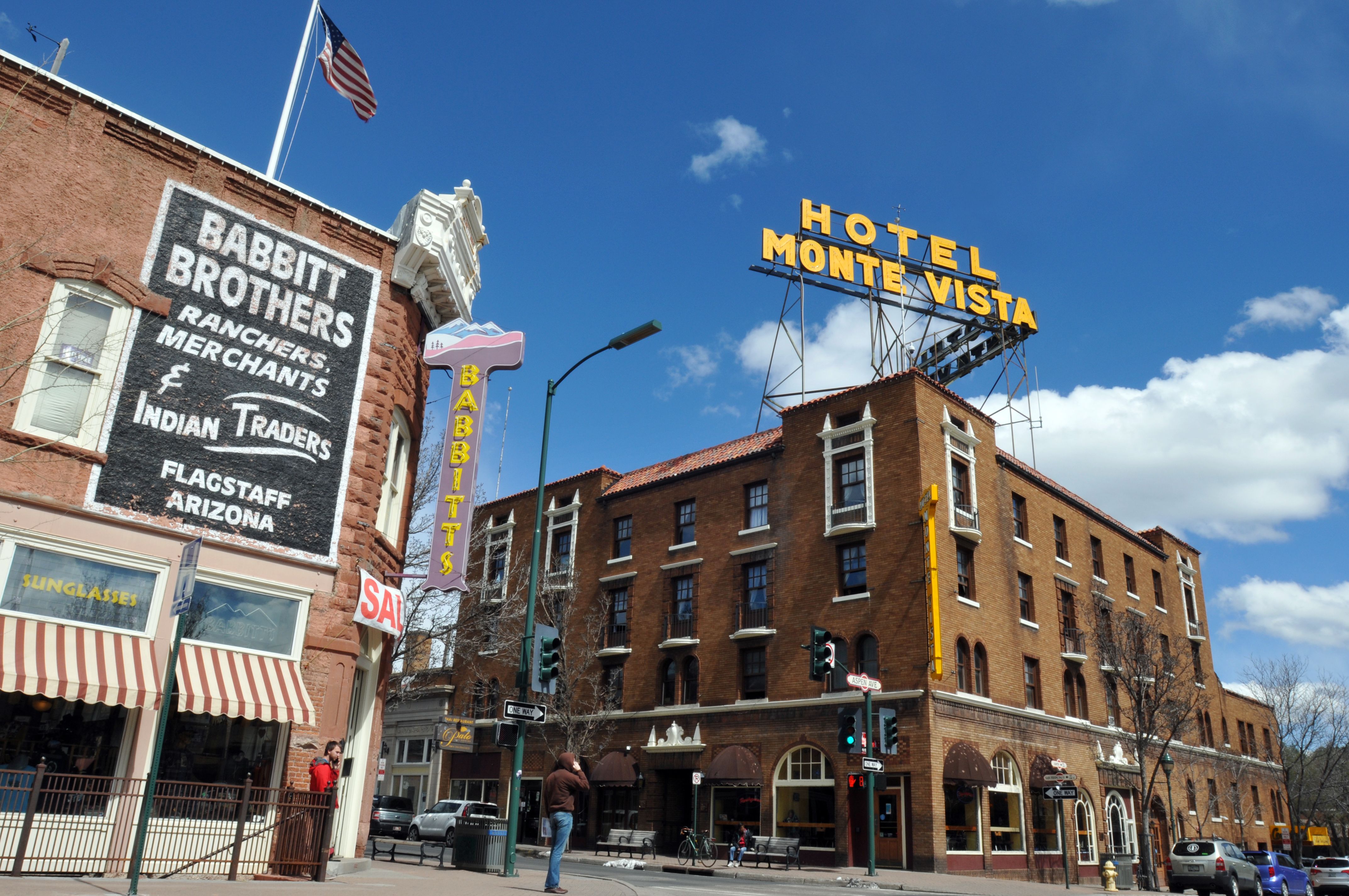
Photo: BD Images/Shutterstock
Phoenix might be Arizona’s gayest city, but LGBTQ-friendly Flagstaff sports an abundance of outdoor activities where weary travelers can stretch their legs. Sunset Crater Volcano National Monument, located 20 miles outside of town, features an extensive network of hiking trails and a 34-mile scenic loop for drivers. The seven-mile Abineau-Bear Jaw Loop brings hikers from forests thick with ponderosa pine to the San Francisco Peaks. Flagstaff also serves as a gateway to Grand Canyon National Park, located an hour-and-a-half north of town.
The small city of Flagstaff can be explored in a single day, leaving plenty of time for big adventures in the surrounding wilds. LGBTQ people can find their crew at the queer-friendly Hotel Monte Vista, a historic downtown lodging from 1927 that houses a popular coffee shop and cocktail lounge. Mother Road Brewing serves locally made beer with a nod to Route 66. MartAnne’s is a colorful breakfast joint with classic American comfort food. Lowell Observatory, a training ground for astronomers, boasts giant telescopes where stargazers can ponder their place in the universe.
Travel from Flagstaff to Santa Fe: 5.5 hours, 383 miles
Stop four: Santa Fe, New Mexico

Photo: Nelson Sirlin/Shutterstock
New Mexico’s capital doesn’t have many LGBTQ-specific establishments, but with a nickname like “The City Different,” there’s no denying Santa Fe is far from straight. Queer folx into fine art will fawn over sites like Meow Wolf, an uber-trippy interactive art installation; the Georgia O’Keeffe Museum, a Rorschach test for lady lovers; and the Santa Fe Opera, an outdoor summer series for classical music fans. Serious art collectors should head to Canyon Road, where you can search over 100 galleries for a framed souvenir.
Foodies should sample Santa Fe’s Mexican-inspired cuisine at spots like El Parasol and The Shed, located in one of the historic adobe haciendas that’s characteristic of the local architecture. There probably won’t be time to taste the 45 different margaritas on Santa Fe’s fabled Margarita Trail, but if you want to try the city’s classic cocktail, head to Maria’s New Mexican Kitchen. The old-school restaurant serves one-hundred variations.
Travel from Santa Fe to Carlsbad: 4.5 hours, 273 miles
Stop five: Carlsbad, New Mexico

Photo: Sean Pavone/Shutterstock
The Pride of the Pecos River isn’t overflowing with queer life, but travelers don’t stop here for the city — they visit for the surroundings. Carlsbad offers access to the Chihuahuan Desert, the most ecologically diverse desert in the Western Hemisphere and an abundance of aquatic features like Sitting Bull Falls, a 150-foot canyon cascade and Rattlesnake Springs, a serene marine-side birding spot.
Alluring though these sites may be, Carlsbad’s crowning jewel is the one you can’t see: Carlsbad Caverns National Park. The park, located 25 minutes south of town, welcomes around 400,000 visitors annually to a subterranean maze with roughly 73 square miles of over 100 caves. If you’re visiting between spring and fall, make sure you’re back above ground by sunset. Approximately 400,000 Mexican free-tailed bats fly from the cave’s mouth and into the night sky every night. If you’ve been dying to test out some super-queer Batman and Robin cosplay, consider this your bat signal.
Travel from Carlsbad to Austin: 7.5 hours, 460 miles
Stop six: Austin, Texas
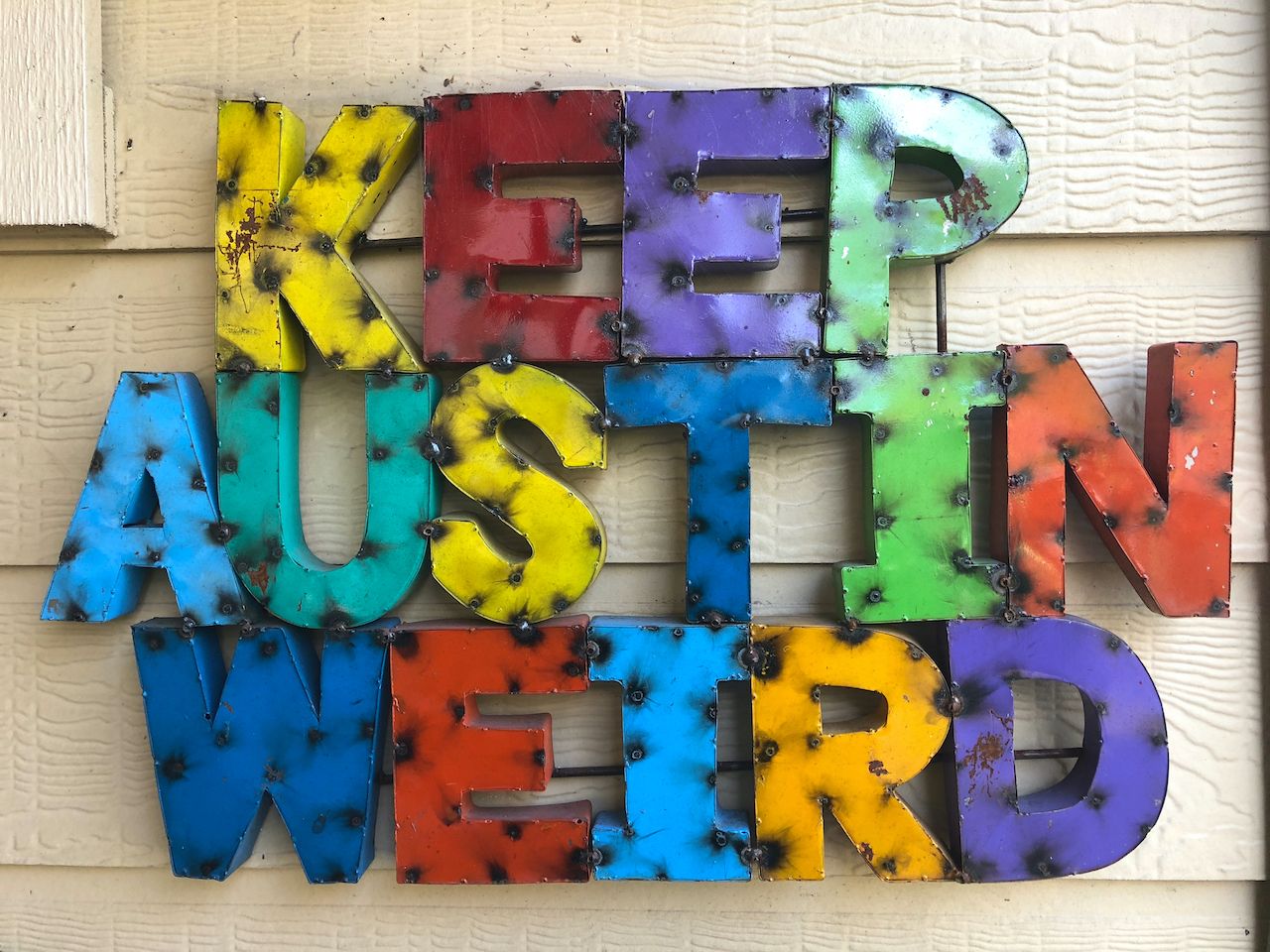
Photo: Chase Hahn/Shutterstock
ATX defines itself as queer with a motto demanding commitment: “Keep Austin Weird.” Luckily, the locals consistently deliver. Austin is a liberal bastion in a sea of Southern conservatism. Even though it’s landlocked, it’s considered America’s “third coast.” The 1.5 million Mexican free-tailed bats underneath the Congress Avenue Bridge share a backyard with steely skyscrapers and luxury hotels. Fine dining happens at food trucks, acclaimed musicians play at hole-in-the-wall bars, and the natural landscape makes this busy metropole an outdoor enthusiast’s dream. It’s no wonder Austin is one of the fastest-growing cities in the US — it’s got a little something for everyone.
The most significant LGBTQ nightlife scene is Downtown on 4th Street, including (but not limited to) Oilcan Harry’s and The Iron Bear. For a gay daytime hang, drive 30 minutes to Lake Travis where you’ll find friendly queer folx sunbathing at Hippie Hollow — the Lone Star State’s only legal nude beach.
Don’t feel beholden to queer spaces, however. Austin’s all-are-welcome attitude means you can join the crowds at Barton Springs Pool, go shopping for fashionable threads along South Congress Avenue, or search the streets for world-class graffiti without ever feeling out of place.
Travel from Austin to Fayetteville: 8.5 hours, 530 miles
Stop seven: Fayetteville, Arkansas
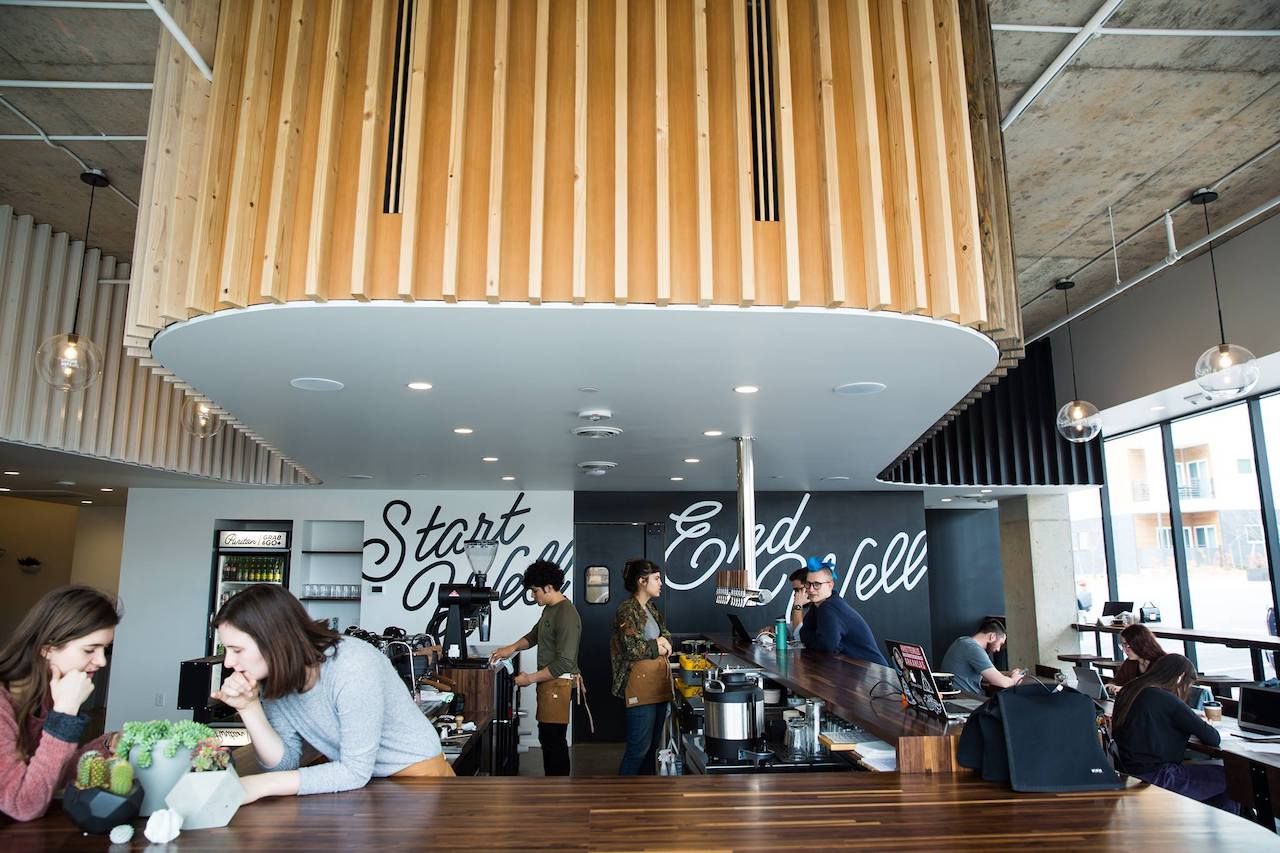
Photo: Puritan Coffee & Beer/Facebook
Queer-friendly Arkansas is an oxymoron. But every rule has an exception, and in Arkansas, that exception is Fayetteville. Tucked into a bucolic corner of the Ozark Mountains, this cozy college town feels worlds away from the conservative sensibilities found elsewhere in the state. On top of holding the state’s largest LGBTQ Pride celebration, Fayetteville is also the first city in Arkansas to join the International Gay and Lesbian Travel Association.
West Dickson Street, which runs into the University of Arkansas, is the cultural epicenter of town. Be sure to visit Condom Sense, a quirky mom-and-pop sex shop; Dickson Street Bookshop; an enormous used-book store; and Puritan Coffee and Beer, the local go-to for everything brewed. Arsaga’s Mill District, located nearby, is the tastiest and trendiest restaurant in town. LGBTQ nightlife lives at C4 Nightclub and Lounge.
If you’re looking for outdoor excursions, rent a bike to ride along the Razorback Regional Greenway — a 36-mile trail that weaves around Northwest Arkansas. Those who prefer trails with an ABV content should check out the Fayetteville Ale Trail — a craft brew adventure that visits 17 local beer joints.
Travel from Fayetteville to Nashville: 8 hours, 529 miles
Stop eight: Nashville, Tennessee

Photo: f11photo/Shutterstock
Like Austin and Fayetteville, Nashville is part of a liberal archipelago in the American South that acts as a magnet for LGBTQ travelers. Queer folx will find chosen family at the Lipstick Lounge, an inclusive lesbian bar; Trax, an unpretentious dive; and Suzy Wong’s House of Yum, Asian-fusion food with a side of drag queens.
This honky-tonk town is the Country Music Capital of the World, and no visit is complete without sampling the local sound. Stars like Dolly Parton came of age at the Grand Ole Opry; Stetson-clad singers get their start at open mic nights in the bars of Lower Broadway; up-and-coming songwriters (like Taylor Swift back in the day) test new tunes at Bluebird Cafe. If you want to keep it queer, press play on Spotify’s Orville Peck station and drive to hip ‘hoods like East Nashville (the Williamsburg of the South) and the Gulch, an area for eating and shopping, while getting serenaded by the gay icon of country music.
Travel from Nashville to Columbus: 6 hours, 378 miles
Stop nine: Columbus, Ohio
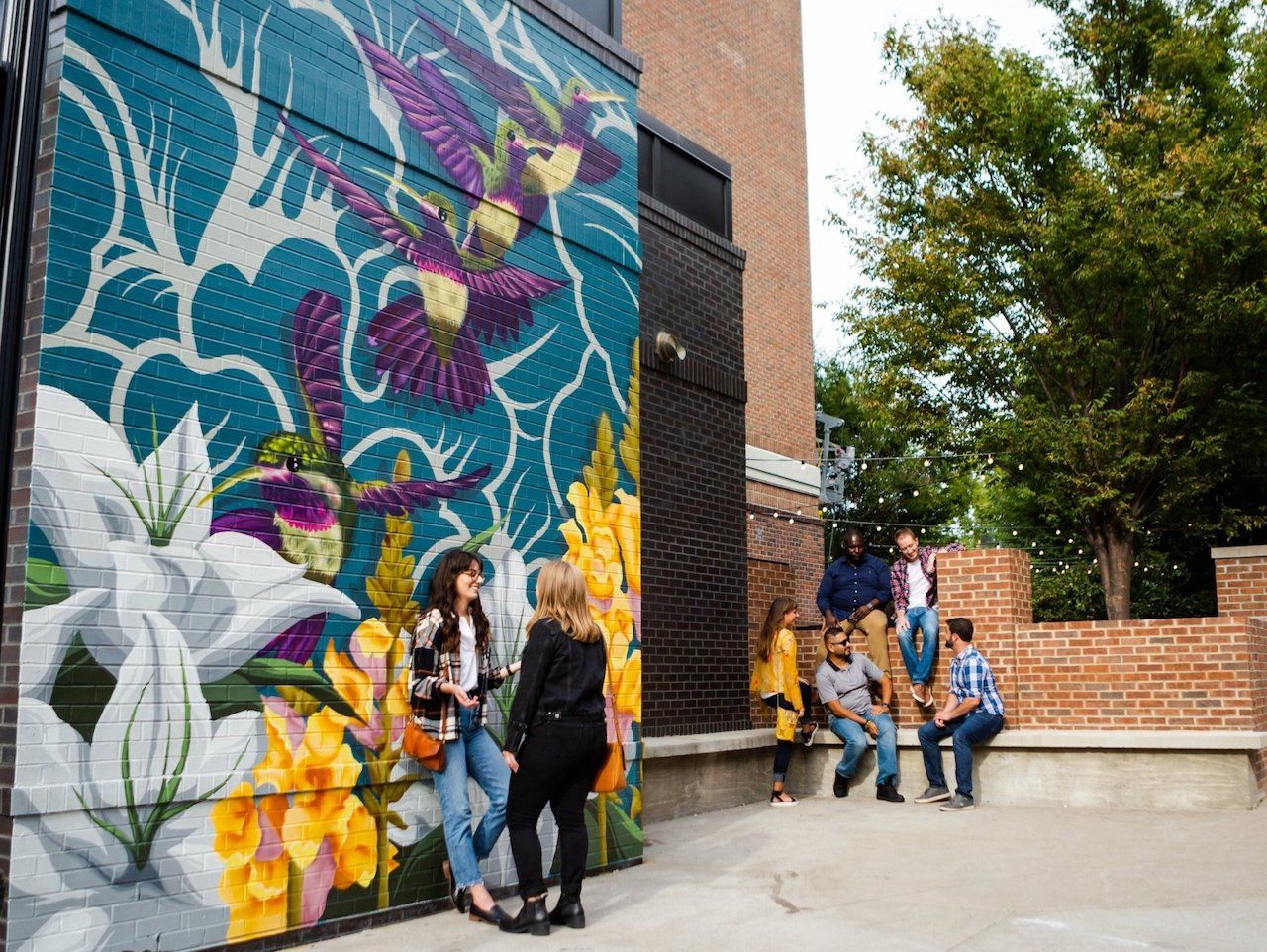
Photo: Experience Columbus/Facebook
Columbus isn’t just the capital of Ohio — it’s also the queer capital of the Midwest. The city has more LGBTQ residents per capita than Chicago, two gayborhoods, Short North and German Village, and a friendly cornfed vibe that makes everyone feel welcome.
Short North Arts District, home to gay haunts Axis Nightclub and Union Cafe, is packed with contemporary art galleries, locally owned restaurants, and chic boutiques. A stroll down North High Street will lead visitors to the neighborhood’s best shops. The historic German Village, which retains architecture built by 19th-century German immigrants, gets a modern update with LGBTQ hangs like Tremont Lounge, a neighborhood dive; Club Diversity, a quirky piano lounge; and Daddy’s, a queer bar with vegan food trucks on the Southside of town.
There aren’t tons of must-see monuments in Columbus, but travelers don’t come for the sites — they come for the food. A few C-bus favorites include Katalina’s for brunch, Condado Tacos for lunch, and Dirty Frank’s Hot Dog Palace whenever you’re feeling naughty. At North Market, a cornucopia of local food vendors serve everything from savory international cuisines to award-winning sweet treats. The craft beer scene is equally robust, and visitors should try Hoof Hearted Brewery (check out the swimming pool), Brewdog Franklinton (check out the rooftop), and Wolf’s Ridge Brewing (check out the free Saturday tours). On sunny summer days, get your meal to go and head to the Scioto Mile — a well-maintained green space hugging the river that bisects town.
Travel from Columbus, to Pittsburgh: 3 hours,186 miles
Stop 10: Pittsburgh, Pennsylvania
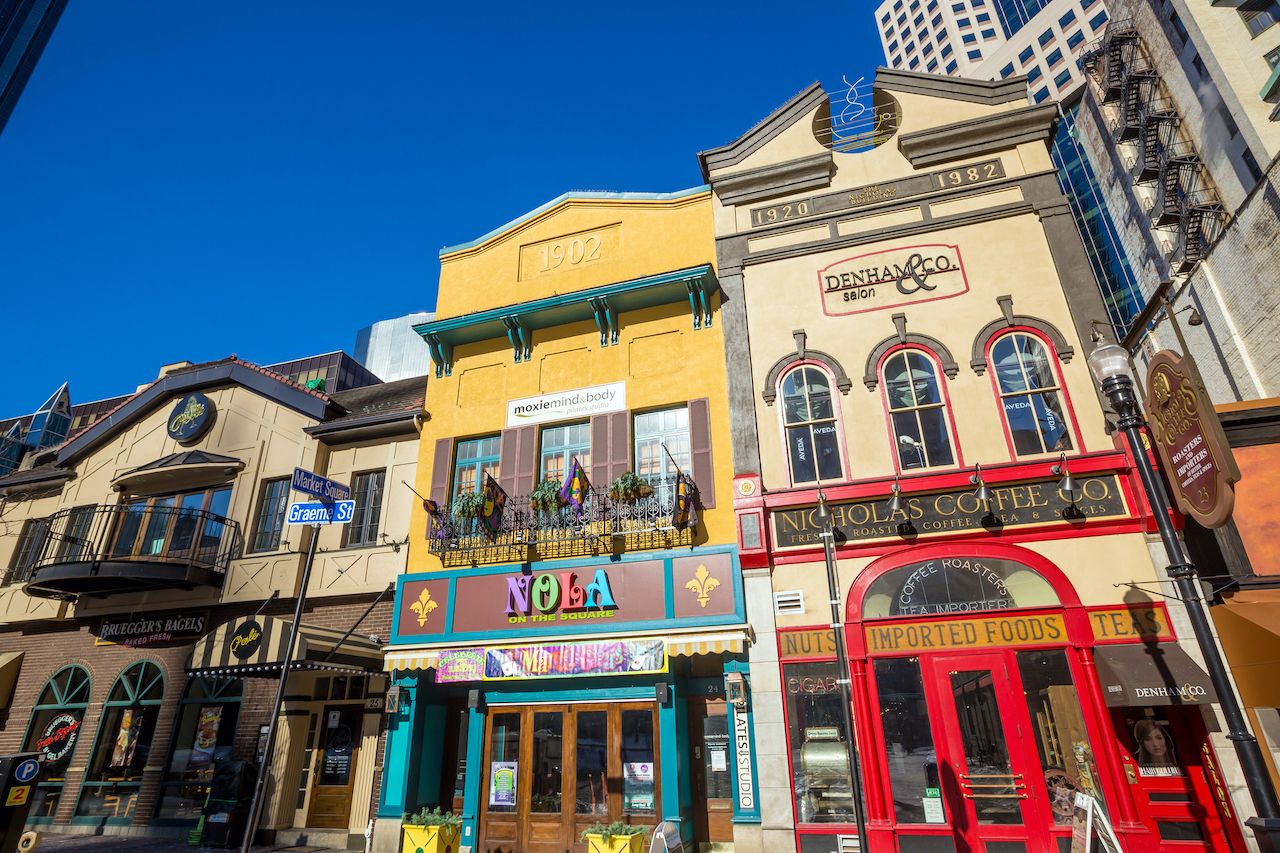
Photo: f11photo/Shutterstock
In 1949, pop art pioneer Andy Warhol left his home in Pittsburgh and never looked back. This blue-collar town wasn’t always a great place to be gay. But in the past decade, Warhol’s Rust Belt city received a makeover RuPaul might applaud and attracted a dynamic LGBTQ community. The town is now one of the Midwest’s most significant cultural hubs, and perhaps to Warhol’s dismay, home to his work’s most comprehensive collection. The Andy Warhol Museum takes a fascinating look at the artist’s career, making it the most notable “Pitt” stop in town.
Those who explore deeper will find that queer life extends from Downtown to Oakland and even beyond. A mix of university students and young professionals enjoy nightlife options like classic gay clubs, saunas, and go-go joints.
Pittsburgh is only three-and-a-half hours from Columbus and six hours from NYC, so while it makes a fine day-long detour, you can easily pull an Andy and run off to the Big Apple soon after arriving.
Travel from Pittsburgh, to New York City: 6 hours, 371 miles
Stop 11: New York City, New York

Photo: Glynnis Jones/Shutterstock
End your queer-themed road trip where the modern LGBTQ rights movement began. Much like San Francisco, NYC is a queer capital that requires a few days to scratch the surface. Consider returning your car upon arrival (if it’s a rental) or parking in a garage to avoid the fines regularly issued by ticket-happy meter maids.
For a crash course on LGBTQ history, visit Christopher Park and the Leslie-Lohman Museum of Gay and Lesbian Art, a compact art space with famous and lesser-known queer talents. On balmy summer days, bring a towel to Christopher Street Pier to join a see-and-be-seen crowd of speedo devotees. Central Park’s Sheep Meadow transforms into a DIY gay bar for “Second Sundays” — a free shindig that attracts shirtless boys to the grassy field between May and September. Jacob Riis Beach, located in Queens, is the local seaside escape for a diverse mix of LGBTQ folx. For LGBTQ shops, check out Kirrin Finch (menswear for women), Park and Ronen (classy designs for gay sophisticates), Leather Man (kinky clothes and accouterment), and the Bureau of General Services — Queer Division, an all-volunteer LGBTQ bookstore.
Queer Manhattan comes alive at night, and choosing where to stay should be based on where you want to go out. Broadway chorus boys set the scene in Hell’s Kitchen at an ensemble of gay bars like Industry. The West Village is a historic place to soak up old NYC. Stonewall and Julius’ are mandatory stops for visitors while the Duplex and lesbian-focused Cubby Hole make a fun addendum to any evening. The East Village attracts friendly faces to spots like Club Cumming, a bar and performance space frequented by colorful creatives, and Boiler Room, which serves the cheapest cocktails in town. Trendy Brooklyn neighborhoods like Williamsburg, Bushwick, and Park Slope have their fair share of queer establishments, too, with Metropolitan, 3 Dollar Bill, and Ginger’s leading the charge.
If you’re visiting between May and October, consider escaping NYC’s frenetic energy by taking a trip to Fire Island — a seasonal Elysium off the Long Island coast. The Pines and Cherry Grove, two LGBTQ communities dating back to the 1940s, are the Disney World versions of Sodom and Gomorrah. There’s tons of delightful depravity with none of the biblical destruction.
The best part? Fire Island’s queer section is car-free — a welcome respite after driving roughly 4,000 miles around the US.